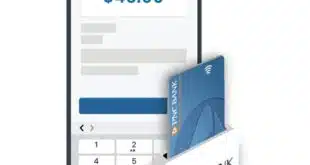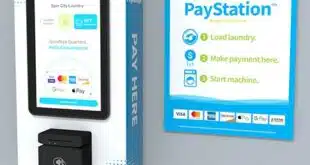Bank of America Corp. gave some insights into its fast-growing mobile-banking service, but the bank also acknowledged that it must convince skeptical customers that the service is valuable and secure. Charlotte, N.C.-based BofA started a controlled rollout of mobile banking in early 2007 and launched the service nationwide in the second quarter of that year. The service had 1 million users a year later. By 2009's third quarter, BofA had 3.5 million active users, Doug Brown, senior vice president of E-Commerce Channels, ATM and Customer Service, told an audience Wednesday at the Bank Administration Institute's Retail Delivery conference in Boston. BofA claims to have a 35% share of the mobile-banking market, more than any other bank. The bank promotes mobile banking through a variety of channels, including online and in branches. Some 85% of BofA's mobile-banking customers use a smart phone such as Apple Inc.'s iPhone or the BlackBerry from Research in Motion Ltd. Hot-selling smart phones have larger screens and more capabilities than regular cell phones to handle complex services such as mobile banking. More than 80% of BofA's mobile-banking users are between the ages of 18 and 44. Ninety-nine percent of users check account balances and 90% view transaction details, Brown said. A smaller number use the bill-pay and funds-transfer features, but customers nonetheless are moving money to the tune of $9.5 billion on an annualized basis. They're also doing 15 million searches a year through mobile devices to find BofA ATMs and branches. Point-of-sale debit card transaction volume benefits from the bank having a large cadre of mobile users, Brown added. “There is a measurable lift” in card usage, he said, though he didn't quantify it. The apparent reason is that mobile-banking users can quickly check their account balances to ensure they have funds available for a purchase. Despite the early success, BofA research shows it still has plenty of work to do to expand its mobile-banking customer base, according to Brown. The top reason for not signing up, cited by 47% of surveyed consumers who don't use mobile banking, is that “I don't see a use for it,'” Brown said. The No. 2 reason was security worries, cited by 44% of respondents. Banks often promote transaction alerts to notify customers on their mobile phones of suspicious transactions as one advantage of mobile banking, but so far the public hasn't been swayed, according to Javelin Strategy & Research. “We're not seeing people take up adoption of alerts the way we hoped,” said Mark Schwanhausser, a research analyst at Pleasanton, Calif.-based Javelin. Schwanhausser and Javelin founder James Van Dyke spoke on the same panel as Brown. Mobile-banking adoption would increase if banks truly made alerts in real time and eliminated the delays common today, according to Van Dyke. They also need to find a way to allay customers' security fears. “Nothing trumps security,” he said.
Check Also
Sezzle Sues Shopify Over Antitrust Allegations and other Digital Transactions News briefs from 6/10/25
Buy now, pay later platform Sezzle Inc. has sued Shopify Inc., alleging federal and state antitrust violations …




